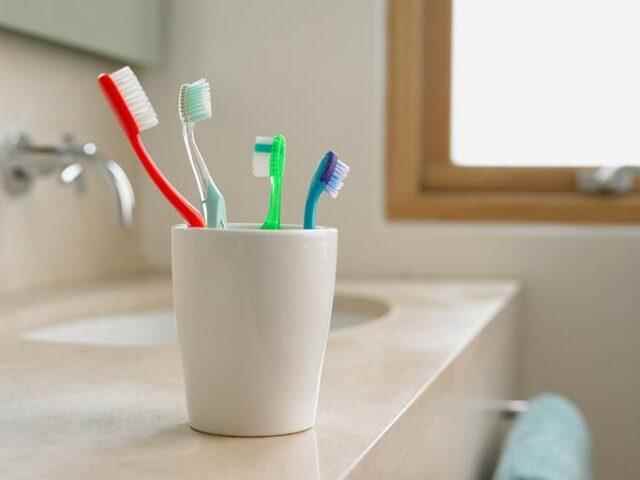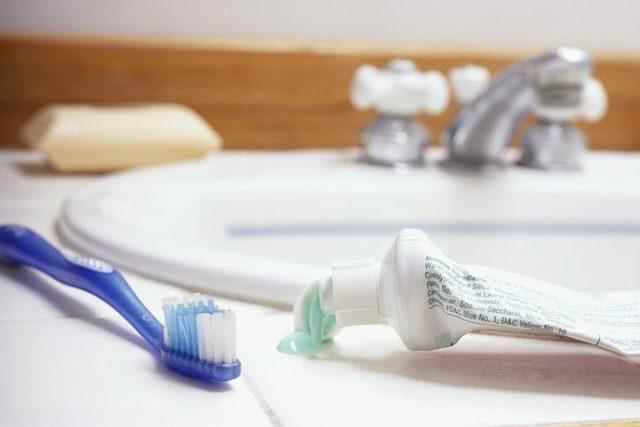Martha Henriques
BBC Future
By brushing properly, we can avoid many chronic diseases as well as protect our teeth and gums. But research shows that many people don’t do it right.
“Most people think it’s food residue that needs to be cleaned from teeth. That’s partly true. The main thing is to remove bacteria from the teeth,” says Josefine Hirschfield of the University of Birmingham in the UK.
These bacteria and microorganisms live in the mouth and form a sticky layer known as dental plaque. This plaque contains 700 different bacteria as well as various fungi and viruses. In terms of this diversity, the mouth comes second after the intestines.
It is not enough to rinse the mouth to clean this layer, it must be removed by brushing.
The most important part when cleaning dental plaque is the line where the teeth meet the gums. Microbes penetrate the gingival tissue from here, causing inflammation and eventually gingival recession (periodontitis).
For this reason, Hirschfeld says that while brushing teeth, it is necessary to target the gums, while doing this, the teeth are already cleaned.
How to clean gums best?
One of the most effective ways to remove dental plaque “modified Bass techniqueIt’s a method called “.
In this technique, the toothbrush is placed on the edge of the gum as if the bristles are at an angle of 45 degrees to the long axis of the tooth. While the brush is vibrating at short intervals, the bristles are pushed into the gingival groove and the bristles of the brush are made to move back and forth without lifting. It is necessary to do this for two minutes, covering all teeth.
However, it is also important how much pressure is applied to the gums while performing these procedures. While the right amount of pressure is still controversial, excessive pressure is known to damage gums and enamel, especially with hard-tipped brushes.
In the Fones method, the toothbrush is held at an angle of 90 degrees to the tooth and the teeth and gums are cleaned with circular movements.
Experts recommend brushing for two minutes twice a day.
Those who have tooth or gum problems need to complete this process in a longer time.
It is stated that exceeding the recommended frequency of brushing does not help much, and in some cases, it may even lead to wear on the gums and tooth enamel.
However, those with special conditions, such as those who wear braces, need to clean their teeth after every meal.

Before or after breakfast?
Most toothpaste manufacturers and dental clinics recommend brushing before breakfast.
However, this is also a controversial issue.
“There is no definitive recommendation. But many dentists will recommend brushing after breakfast because it will not only remove plaque but also food residues,” says Hirschfeld.
However, the American Dental Association says you should wait an hour after a meal before brushing your teeth. Because the acids in the food and the secretions produced by the microbes while digesting carbohydrates make the teeth sensitive.
Acids soften tooth enamel for a while and weaken calcium and phosphate, which are important components of enamel. However, these are regenerated within a few hours by the minerals in the saliva.
“If you don’t wait for this self-repairing process, the worn surface of the enamel will be further eroded by brushing,” says Hirschfeld.
The before or after dinner debate is actually important at dinner. The advice is clear: Brush your teeth before going to bed.
Saliva is the natural preservative in the mouth. Since saliva production decreases during sleep, it is important to clean all plaque in the mouth before going to bed.
What to clean teeth with?
Some toothpastes and hard toothbrushes on the market can corrode teeth, says Hirschfeld. In particular, toothpastes sold as “whitening” gradually erode tooth enamel and cause cavities as well as sensitization to heat and cold.
For adults, medium-hard brushes and toothpastes without abrasive particles are best suited. Small-headed brushes provide convenient access to every corner of the mouth. When the bristles begin to wear out, it is necessary to replace the toothbrush.
Miswak, which is widely used in Africa, the Middle East and South Asia, is also effective in removing plaque and preventing caries. But if it is not used correctly, it erodes the gums.
While researches with electric toothbrushes first showed that they were not much different from normal brushes, after examining the results of the research, it was concluded that they could be a little more effective in cleaning dental plaque.
Hirschfeld states that if a normal toothbrush is used correctly, the same result can be achieved with them.
Should you use dental floss?
The plaques formed on the surface of the teeth are also valid between the teeth and these surfaces also need to be cleaned. In addition to dental floss, an interdental brush can also be used to do this.
Interdental cleaning is not very common among the general population. However, experts state that it is beneficial to clean the teeth in this way once a day.
Studies show that flossing protects teeth better against gingivitis than brushing alone. If gingivitis is not treated, it can lead to gingival recession (periodontitis). However, there is not much data that floss reduces plaque. Experts cite the difficulty of research on this subject.

Which toothpaste?
Commercially available toothpastes carry many qualifications, from anti-caries to desensitizing to whitening.
Hirschfeld states that when he looked at the ingredient list of cheap toothpastes, he saw no problems with them.
The most important thing to look out for on this list is fluoride.
In order for fluoride to protect tooth enamel, it should be at a level of at least 1350 ppm for adults and 1000 ppm for children.
Tooth enamel is the hardest substance in the human body and the hardest to find in nature. “It’s almost like a diamond,” says Hirschfeld.
Tooth enamel consists of the mineral hydroxyapatite (a type of calcium phosphate).
However, despite its durability, tooth enamel can be easily dissolved in acid. Microbes in dental plaque also secrete lactic acid while digesting sugar and carbohydrates obtained from food residues between the teeth. Lactic acid erodes the tooth enamel, causing microbes to penetrate the inner structure of the tooth and cause cavities.
Some compounds in saliva provide partial regeneration of eroded minerals.
Since the fluoride in toothpaste will protect the tooth enamel, spitting out the paste after brushing but not rinsing the mouth with water will retain more fluoride and provide longer-term protection.
However, it is necessary to be more cautious about some materials added to toothpastes in recent years.
For example, there is no data on the whitening or antibacterial effect of charcoal, which has been used to clean teeth for thousands of years. It can also lead to tooth wear and other problems.
Since there is no fluoride in toothpastes containing charcoal, it can be said that it is less effective in protecting teeth against decay.
Carbonated toothpastes are not controversial. One study concluded that they cleared plaque better and reduced bleeding from gingivitis. However, more research is needed on this subject.
Should you gargle?
Rinsing the mouth with special mouthwash is not as effective as brushing in cleaning the plaque on the teeth.
Experts say it’s possible to remove a little more plaque with mouthwash, not replacing, but in addition to, brushing.
It is also stated that mouthwash is also effective against gingivitis, but for this it must contain at least 100 ppm fluoride.
Although brushing, flossing or using interdental brushes and mouthwash may seem like a long and arduous task, it is important not only for maintaining dental health and avoiding bad breath, yellowing of the teeth and caries, but also for protection from type 2 diabetes, cardiovascular diseases and cognitive decline. carrying.
